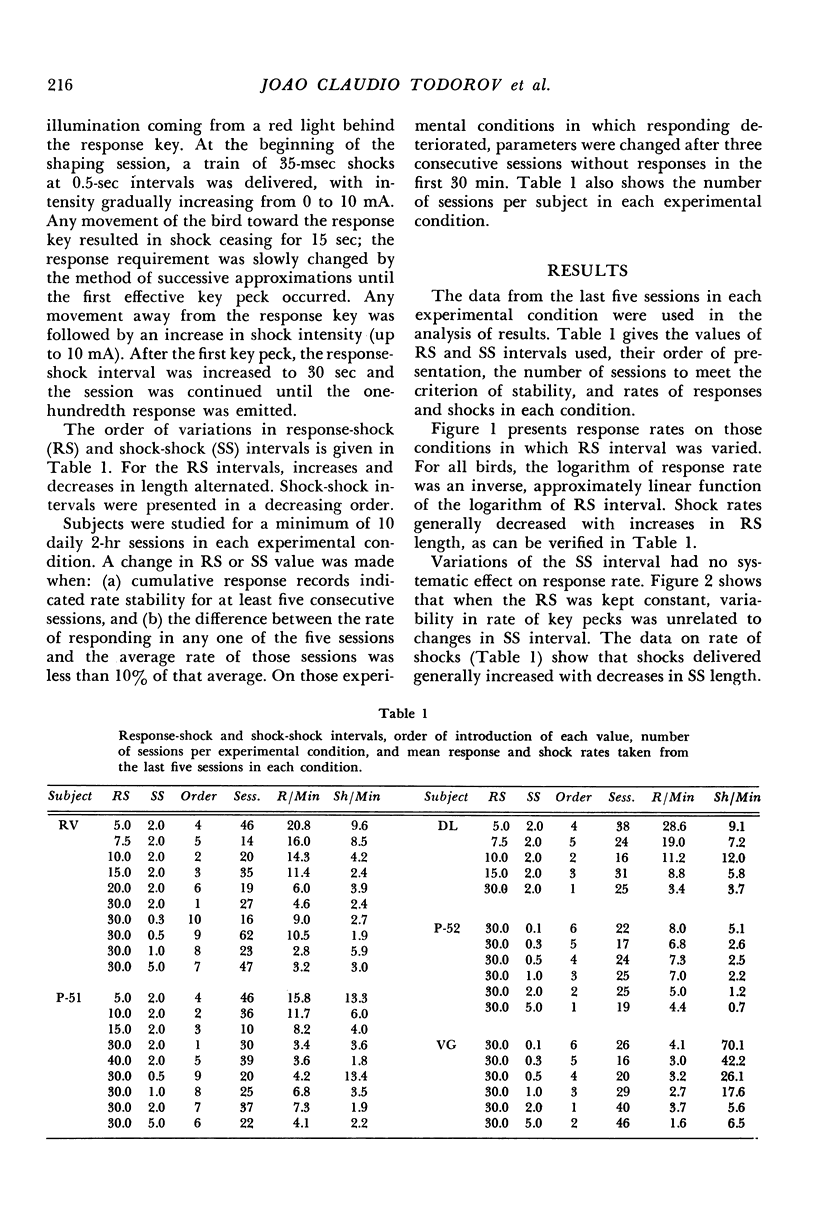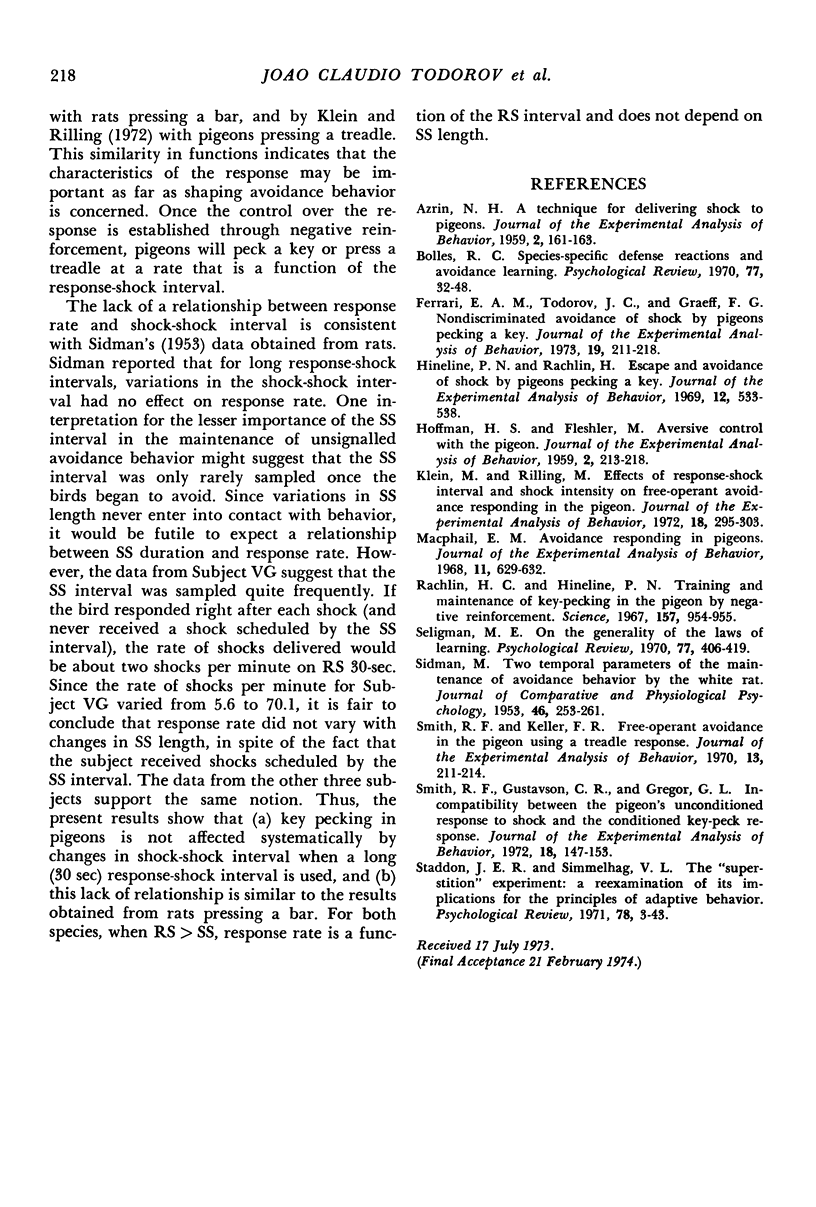Abstract
Five pigeons were exposed to an unsignalled avoidance procedure where key pecks were maintained through shock postponement. Functions obtained showed an inverse relationship between rate of responding and length of the response-shock interval, while changes in the shock-shock interval had no systematic effect on response rates. The rate of shocks delivered generally decreased with increases in length of both response-shock and shock-shock intervals. Results show that key pecking in pigeons, maintained through an unsignalled avoidance procedure, was affected by changes in response-shock and shock-shock intervals in the same manner as other responses in pigeons and in rats.
Full text
PDF



Selected References
These references are in PubMed. This may not be the complete list of references from this article.
- AZRIN N. H. A technique for delivering shock to pigeons. J Exp Anal Behav. 1959 Apr;2:161–163. doi: 10.1901/jeab.1959.2-161. [DOI] [PMC free article] [PubMed] [Google Scholar]
- Ferrari E. A., Todorov J. C., Graeff F. G. Nondiscriminated avoidance of shock by pigeons pecking a key. J Exp Anal Behav. 1973 Mar;19(2):211–218. doi: 10.1901/jeab.1973.19-211. [DOI] [PMC free article] [PubMed] [Google Scholar]
- HOFFMAN H. S., FLESHLER M. Aversive control with the pigeon. J Exp Anal Behav. 1959 Jul;2:213–218. doi: 10.1901/jeab.1959.2-213. [DOI] [PMC free article] [PubMed] [Google Scholar]
- Hineline P. N., Rachlin H. Escape and avoidance of shock by pigeons pecking a key. J Exp Anal Behav. 1969 Jul;12(4):533–538. doi: 10.1901/jeab.1969.12-533. [DOI] [PMC free article] [PubMed] [Google Scholar]
- Klein M., Rilling M. Effects of response-shock interval and shock intensity on free-operant avoidance responding in the pigeon. J Exp Anal Behav. 1972 Sep;18(2):295–303. doi: 10.1901/jeab.1972.18-295. [DOI] [PMC free article] [PubMed] [Google Scholar]
- Macphail E. M. Avoidance responding in pigeons. J Exp Anal Behav. 1968 Sep;11(5):629–632. doi: 10.1901/jeab.1968.11-629. [DOI] [PMC free article] [PubMed] [Google Scholar]
- Rachlin H., Hineline P. N. Training and maintenance of keypecking in the pigeon by negative reinforcement. Science. 1967 Aug 25;157(3791):954–955. doi: 10.1126/science.157.3791.954. [DOI] [PubMed] [Google Scholar]
- SIDMAN M. Two temporal parameters of the maintenance of avoidance behavior by the white rat. J Comp Physiol Psychol. 1953 Aug;46(4):253–261. doi: 10.1037/h0060730. [DOI] [PubMed] [Google Scholar]
- Smith R. F., Gustavson C. R., Gregor G. L. Incompatability between the pigeons' unconditioned response to shock and the conditioned key-peck response. J Exp Anal Behav. 1972 Jul;18(1):147–153. doi: 10.1901/jeab.1972.18-147. [DOI] [PMC free article] [PubMed] [Google Scholar]
- Smith R. F., Keller F. R. Free-operant avoidance in the pigeon using a treadle response. J Exp Anal Behav. 1970 Mar;13(2):211–214. doi: 10.1901/jeab.1970.13-211. [DOI] [PMC free article] [PubMed] [Google Scholar]


